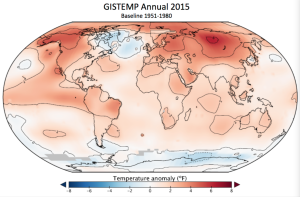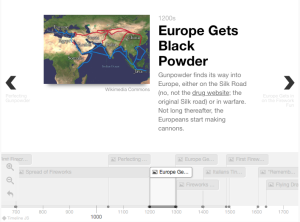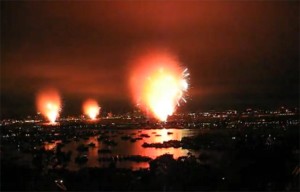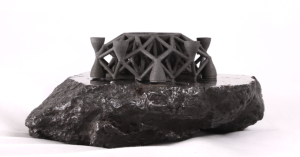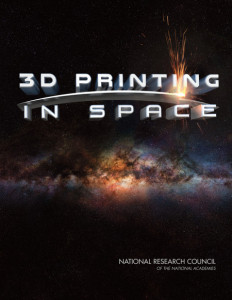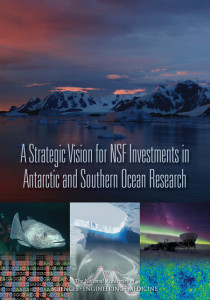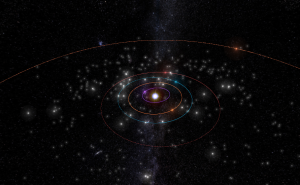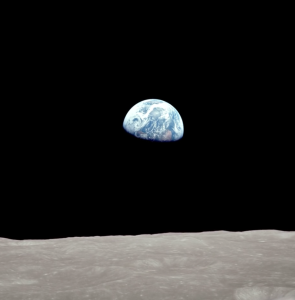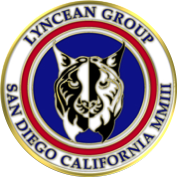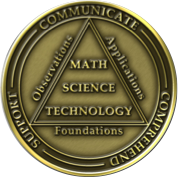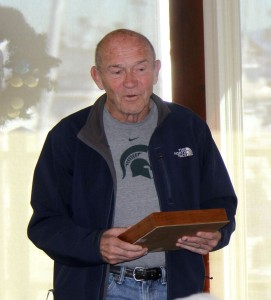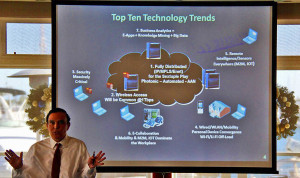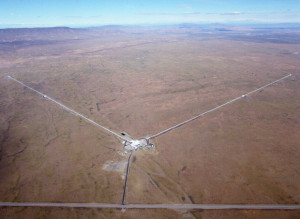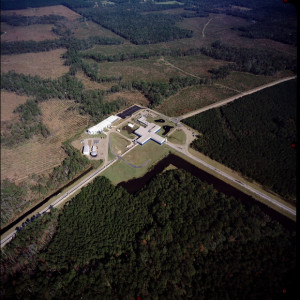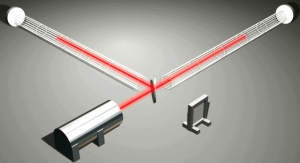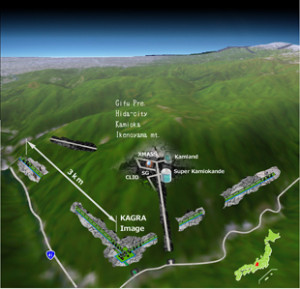Peter Lobner
On 7 January 2016, NASA formalized its ongoing program for detecting and tracking Near-Earth Objects (NEOs) by establishing the Planetary Defense Coordination Office (PDCO). You can read the NASA announcement at the following link:
https://www.nasa.gov/feature/nasa-office-to-coordinate-asteroid-detection-hazard-mitigation
PDCO is responsible for supervision of all NASA-funded projects to find and characterize asteroids and comets that pass near Earth’s orbit around the sun. PDCO also will take a leading role in coordinating interagency and intergovernmental efforts in response to any potential impact threats. Specific assigned responsibilities are:
- Ensuring the early detection of potentially hazardous objects (PHOs), which are defined as asteroids and comets whose orbits are predicted to bring them within 0.05 Astronomical Units (AUs) of Earth (7.48 million km, 4.65 million miles); and of a size large enough to reach Earth’s surface – that is, greater than 30 to 50 meters (98.4 to 164.0 feet);
- Tracking and characterizing PHOs and issuing warnings about potential impacts;
- Providing timely and accurate communications about PHOs; and
- Performing as a lead coordination node in U.S. Government planning for response to an actual impact threat.
As you can see in the following organization chart, PDCO is part of NASA’s Planetary Science Division, in the agency’s Science Mission Directorate in Washington D.C. PDCO is led by Lindley Johnson, longtime NEO program executive, who now has the very impressive title of “Planetary Defense Officer”.
 Source: NASA PDCO
Source: NASA PDCO
You can find out more at the PDCO website at the following link:
https://www.nasa.gov/planetarydefense
The PDCO includes the Near Earth Object (NEO) Observation Program, which was established in 1998 in response to a request from the House Committee on Science that NASA find at least 90% of 1 km (0.62 mile) and larger NEOs. That goal was achieved by end of 2010.
The NASA Authorization Act of 2005 increased the scope of NEO objectives by amending the National Aeronautics and Space Act of 1958 (“NASA Charter”) by adding the following new functional requirement:
‘‘The Congress declares that the general welfare and security of the United States require that the unique competence of the National Aeronautics and Space Administration be directed to detecting, tracking, cataloging, and characterizing near-Earth asteroids and comets in order to provide warning and mitigation of the potential hazard of such near-Earth objects to the Earth.’’
This was further clarified by stating that NASA will:
“…plan, develop, and implement a Near-Earth Object Survey program to detect, track, catalogue, and characterize the physical characteristics of near-Earth objects equal to or greater than 140 meters (459 feet) in diameter in order to assess the threat of such near-Earth objects to the Earth. It shall be the goal of the Survey program to achieve 90 percent completion of its near-Earth object catalog within fifteen years (by 2020)”
The contractors supporting the NASA NEO Observation Program are Jet propulsion Laboratory (JPL), Massachusetts Institute of Technology (MIT) / Lincoln laboratory, Smithsonian Astrophysical Observatory, University Space Research Association, University of Arizona, and University of Hawaii / Institute of Astronomy.
Once detected, NEO orbits are precisely predicted and monitored by the Center for NEO Studies (CNEOS) at JPL. Their website is at the following link:
http://neo.jpl.nasa.gov/neo/
The catalog of known NEOs as of 3 November 2015 included 13,206 objects. NASA reports that new NEOs are being identified at a rate of about 1,500 per year. Roughly half of the known NEOs – about 6,800 – are objects larger than 140 meters (459 feet) in diameter. The estimated population of NEOs of this size is about 25,000. Current surveys are finding NEOs of this size at a rate of about 500 per year. Recent encounters with NEOs include:
- Asteroid 2015 TB145, the “Halloween Pumpkin”
- Roughly spherical, about 610 meters (2,000 feet) in diameter
- Detected 10 October 2015, approaching from the outer solar system, 21 days before closest approach
- Closest approach occurred on 31 October 2015 at a distance of 310,000 miles (1.3 times the distance to the Moon) at a speed of about 78,000 miles an hour.
- Asteroid airburst near Chelyabinsk, Russia
- Airburst occurred 15 February 2013
- Object estimated to be about 19 meters in diameter
- Approached from the inner solar system; not detected before airburst
- Peter Brown at the University of Western Ontario, estimated the energy of the Chelyabinsk airbust at 400 to 600 kilotons of TNT. You can read this analysis in at the following link:
http://www.nature.com/articles/nature12741.epdf?referrer_access_token=OvLha95ujqCh0k4maNPuFNRgN0jAjWel9jnR3ZoTv0PyqszVJsMboh07BaZDfmONEget5lbJtDTXTwE2VvrDWIEgk5iXkd1EFvngsntJFeC1wOg4ASyku1lPPrkWlAPvoRMkxnjovQe0UYqFmFkZ6v9qqq9DL9_3CwYPmTWA6e-sweRQPIyrDHMUaAQYWA9H4TNSsZGN662UcGxlW5d1GA%3D%3D&tracking_referrer=www.theguardian.com
Another result of the NEO Observation Program is the following map of data gathered from 1994-2013 on small asteroids impacting Earth’s atmosphere and disintegrating to create very bright meteors, technically called “bolides” and commonly referred to as “fireballs”. Sizes of orange dots (daytime impacts) and blue dots (nighttime impacts) are proportional to the optical radiated energy of impacts measured in billions of Joules (GJ) of energy, and show the location of impacts from objects about 1 meter (3 feet) to almost 20 meters (60 feet) in size. You can see a rather uniform distribution of these fireballs over the surface of the Earth.
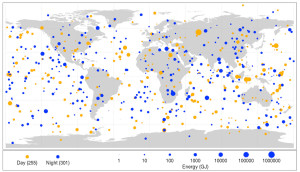 Source: NASA NEO Observation Program
Source: NASA NEO Observation Program
In September 2014, the NASA Inspector General published the report, “NASA’s Efforts to Identify Near-Earth Objects and Mitigate Hazards,” which you can download for free at the following link:
https://oig.nasa.gov/audits/reports/FY14/IG-14-030.pdf
Key findings were the following:
- Even though the Program has discovered, categorized, and plotted the orbits of more than 11,000 NEOs since 1998, NASA will fall short of meeting the 2005 Authorization Act goal of finding 90 percent of NEOs larger than 140 meters (459 feet) in diameter by 2020.
- ….we believe the Program would be more efficient, effective, and transparent were it organized and managed in accordance with standard NASA research program requirements
You will find an NEO Program update, including a reference to the new Planetary Defense Coordination Office, presented by Lindley Johnson on 8 November 2915 at the following link:
http://www.minorplanetcenter.net/IAWN/2015_national_harbor/NEO_Program_update.pdf
So, what will we see in the years ahead as technology is explored and techniques are developed to defend Earth against a significant NEO impact? There have been many movies that have tried to answer that question, but none offered a particularly good answer.

 Source: Google
Source: Google
In 1968, Star Trek explored this issue in Season 3, Episode 3, “The Paradise Syndrome”. Ancient aliens had left a planetary defense device to protect a primitive civilization against their equivalent of NEOs. Only the intervention of Capt. James T. Kirk restored the device to operation in time to deflect an incoming asteroid and save the indigenous civilization.
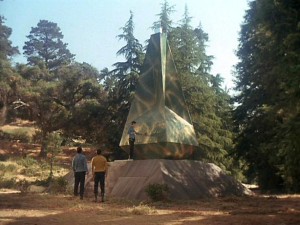 Source: memory-alpha.wiki.com
Source: memory-alpha.wiki.com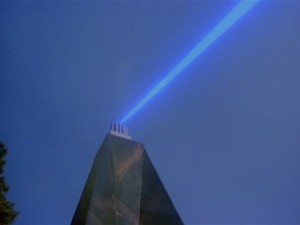 Source: technovelgy.com
Source: technovelgy.com
Our new Planetary Defense Officer has a comparable responsibility on Earth, but without the benefits of special effects.
In 2010, National Academies Press published, “Defending Planet Earth: Near-Earth Object Surveys and Hazard Mitigation Strategies.” This report explores civil defense mitigation action and three basic defense techniques:
- Slow push-pull methods
- Kinetic impact methods
- Nuclear methods
If you have a MyNAP account, you can download this report for free at the following link:
http://www.nap.edu/catalog/12842/defending-planet-earth-near-earth-object-surveys-and-hazard-mitigation
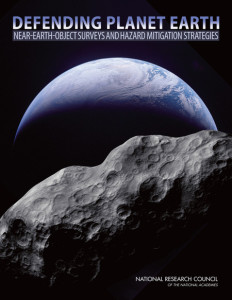 Source: NAP
Source: NAP
 Source, both graphics: NOAA / NASA Annual Global Analysis for 2015
Source, both graphics: NOAA / NASA Annual Global Analysis for 2015
